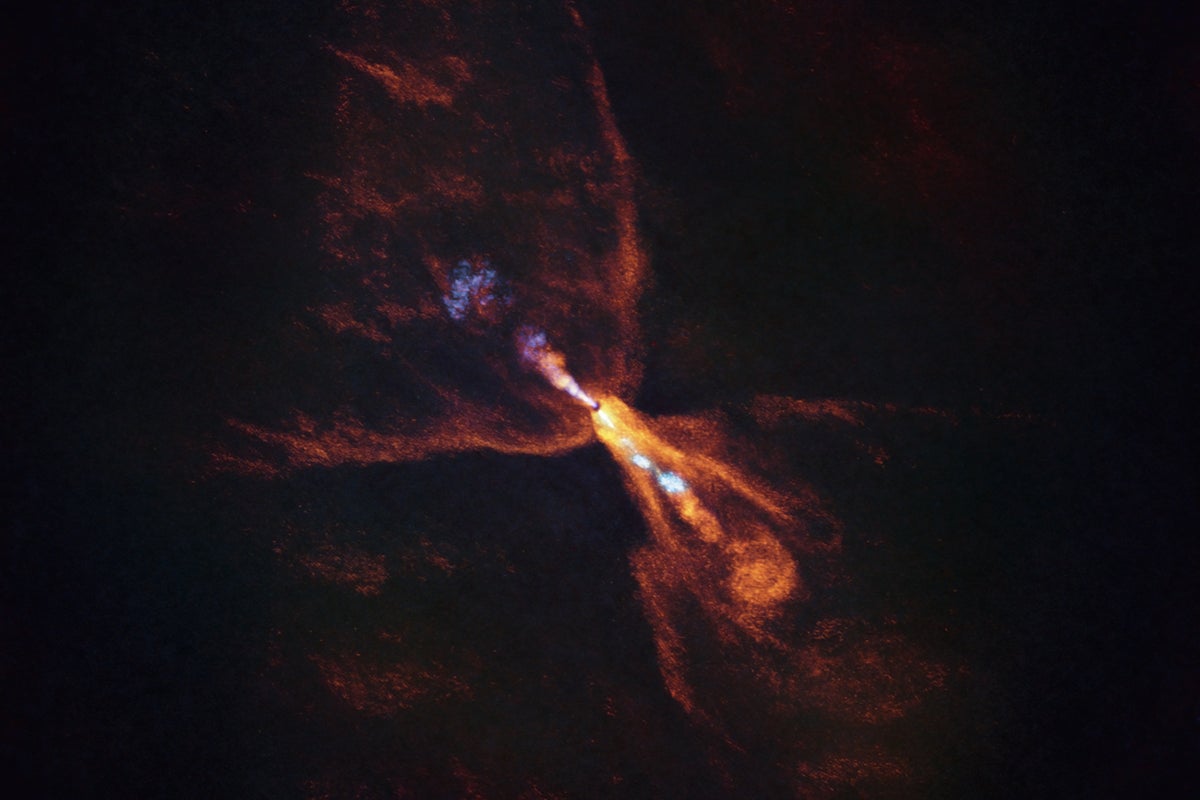
"The James Webb Space Telescope and ALMA have observed the protostar HOPS-315, revealing the early moments of planetary creation in a protoplanetary disk about 1,400 light-years away in Orion."
"HOPS-315, weighing 0.6 solar mass, is expected to become a star akin to our sun, making it an ideal candidate for exploring the early history of our solar system."
"Observations revealed a protoplanetary disk surrounding HOPS-315, where planetesimals form from smaller grains of crystalline minerals as the disk's gas cools, a previously obscured process."
"For generations, astronomers have struggled to understand the formation of planetesimals due to the obscuring clouds around protostars, which conceal their details."
Astronomers have observed the protostar HOPS-315 using the James Webb Space Telescope and ALMA, unveiling early planetary creation about 1,400 light-years away in the Orion constellation. HOPS-315, with a mass of 0.6 solar masses, is anticipated to evolve into a sun-like star, serving as an insightful analog for studying solar system origins. The ongoing observations have pierced obscuring materials surrounding the star, revealing detailed structures, including a protoplanetary disk, where planetesimals begin to form from smaller crystalline minerals as gas cools.
Read at www.scientificamerican.com
Unable to calculate read time
Collection
[
|
...
]